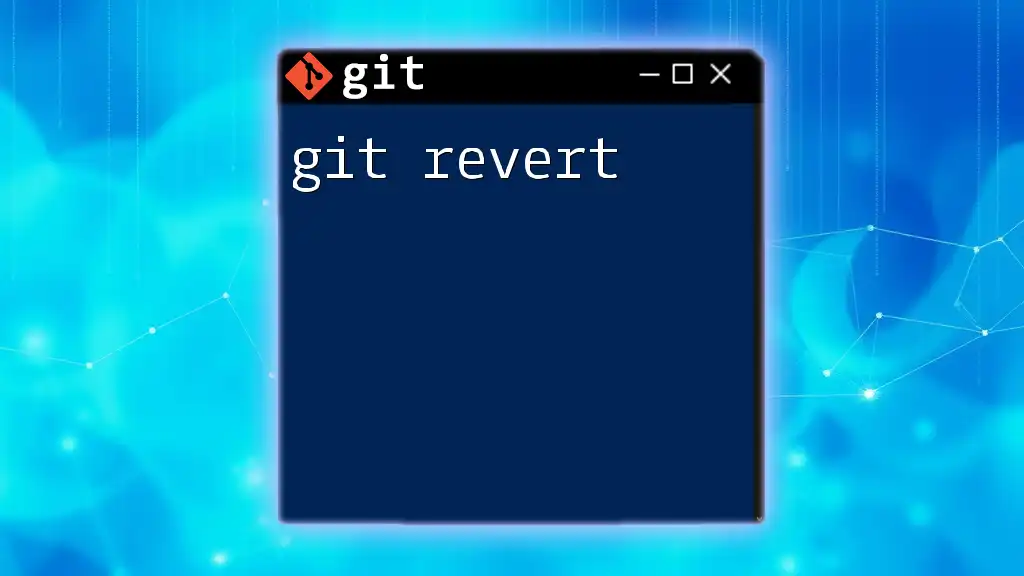To clone a Git repository using Visual Studio Code, you can use the following command in the integrated terminal:
git clone <repository-url>
Replace `<repository-url>` with the URL of the repository you wish to clone.
Understanding Git Repositories
What is a Git Repository?
A Git repository is a centralized location where your project files and their entire version history are stored. It is crucial for version control, allowing multiple developers to collaborate on a project by keeping track of changes made over time. There are two main types of repositories:
-
Local Repository: This version is stored on your personal machine. You can make changes locally, commit them, and keep a history of modifications.
-
Remote Repository: This version is hosted on a server, such as GitHub or Bitbucket, which allows you and your team to share the project. Cloning mainly involves creating a local copy of a remote repository.
Importance of Cloning a Repository
Cloning a repository means creating an exact copy of another repository to work on locally. This is particularly beneficial because it allows you:
- To work offline without relying on an internet connection.
- To have a faster workflow since local operations do not require network latencies.
- To contribute to collaborative projects, where changes can be made locally and pushed to the shared repository later.
Setting Up Your Environment
Installing Visual Studio Code
Before you can clone a Git repository in VSCode, ensure you have the software installed. Head to the [official VSCode website](https://code.visualstudio.com/) to download the latest version for your operating system. The installation process is straightforward: simply run the installer and follow the prompts.
Installing Git
To clone a Git repository, Git must be installed on your system. Here are the steps for different operating systems:
-
Windows: Download the Git installer from [git-scm.com](https://git-scm.com/download/win). Run it and follow the instructions.
-
Mac: You can install Git using Homebrew by running:
brew install git -
Linux: Use your package manager to install Git:
sudo apt install git
Once Git is installed, verify it by running:
git --version
Cloning a Repository Using VSCode
Opening VSCode
Once VSCode is properly installed, open it for the first time. Familiarize yourself with the layout: the activity bar on the left, the editor in the center, and the terminal at the bottom.
Accessing the Command Palette
The Command Palette is a powerful feature in VSCode that allows you to execute commands quickly. Open it using the keyboard shortcut `Ctrl + Shift + P` (or `Cmd + Shift + P` on Mac). You’ll be able to search for and run commands without navigating through menus.
Cloning the Repository
To clone a Git repository, follow these easy steps:
- Open the Command Palette: Hit `Ctrl + Shift + P` or `Cmd + Shift + P`.
- Search for `Git: Clone`: Type "Git: Clone" in the search box and select it.
You’ll be prompted to enter the URL of the repository you want to clone. This URL typically looks like:
https://github.com/username/repository.git
Choosing the Destination Folder
After entering the repository URL, you’ll need to select a location on your local machine. This is where the cloned repository will reside. Choose wisely, as it can affect your project management later.
Opening the Cloned Repository
Once the cloning process is complete, VSCode will prompt you to open the cloned repository. Click on "Open" to access your project files. You can easily navigate through the folders and files using the explorer on the left panel.
Working with the Cloned Repository
Exploring Your Cloned Project
Upon opening your cloned project, take some time to explore your files. The built-in terminal in VSCode is very useful for executing Git commands. You can access it via the menu: `View` > `Terminal`, or use the keyboard shortcut `Ctrl + ` (backtick).
To check the current state of your repository, run:
git status
This command will show you which files are modified, staged, or untracked.
Making Changes and Committing
Once you have your project open, you’ll likely want to make changes. Here’s a simple workflow to follow:
-
Stage your changes: After modifying files, you need to stage them before committing. Use the following command to stage all your changes:
git add . -
Commit your changes: This is a critical step where you save the current state of your project with a message explaining what you’ve done:
git commit -m "Your commit message here" -
Push your changes: Finally, to update the remote repository with your local commits, use:
git push origin main
Troubleshooting Common Issues
Cloning Issues
While cloning a repository, you may encounter errors. One common error is authentication failed. This usually happens when your credentials are incorrect or not set up properly. Ensure that you have your GitHub account properly linked to your local Git configuration.
When encountering an authentication error, a potential solution is to use SSH instead of HTTPS. Setting up SSH keys can simplify the authentication process and improve security.
Checking for Updates
To ensure that your local copy of the repository is up to date with the remote version, you should regularly pull changes. Use the following command to fetch and merge any updates from the remote repository:
git pull origin main
Conclusion
In this comprehensive guide, we covered how to clone a Git repository in VSCode, from setting up your environment to troubleshooting common issues. Familiarity with these commands lays the groundwork for exploring more advanced Git functionalities. By engaging in practicals and practice, you will enhance your command over Git and build better collaborative projects. For more quick Git and VSCode tips, stay tuned to our resources, and happy coding!
Additional Resources
For further reading, consider the official documentation for both Git and Visual Studio Code. Here, you'll find a wealth of tutorials and guides to deepen your understanding of version control and IDE functionalities.








